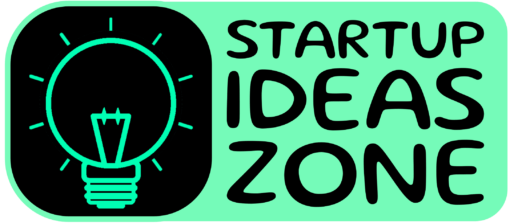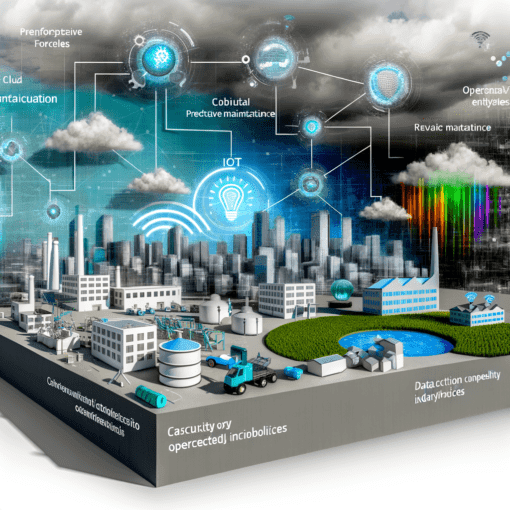Introduction: The Emergence of IoT Sensors in Real-Time Equipment Monitoring
In a world rapidly advancing toward interconnectedness, the Internet of Things (IoT) stands as a pivotal force driving change across various industries. Central to this revolution are IoT sensors, devices capable of monitoring and transmitting real-time data on equipment performance. These sensors represent a confluence of technological innovation and practical utility, holding immense potential to disrupt traditional operational models. For startups, the burgeoning IoT market offers a fertile ground teeming with opportunities for innovation, entrepreneurship, and market penetration. Yet, this landscape is fraught with challenges that require strategic acumen to navigate.
Innovation Potential: Forging New Frontiers
The innovation potential of IoT sensors is vast, extending across diverse sectors such as manufacturing, healthcare, energy, and agriculture. These sensors provide an unprecedented level of transparency into equipment conditions, enabling predictive maintenance and reducing downtime. For instance, in manufacturing, IoT sensors can be custom-fitted into machinery to track performance metrics like temperature, vibration, and pressure in real-time. This data, when analyzed, can predict equipment failures, optimize maintenance schedules, and enhance operational efficiency.
Startups venturing into this domain can position themselves as catalysts for change, offering differentiated products that leverage advanced analytics and machine learning. The strategic integration of Artificial Intelligence (AI) can further enrich these sensors’ capabilities, transforming raw data into actionable insights. Real-world examples such as Ping Services, an Australian startup that uses acoustic analysis to monitor wind turbine performance, illustrate the innovative applications of IoT sensors in optimizing energy production.
Market Disruption: Shifting Paradigms in Equipment Maintenance
The adoption of IoT sensors is fundamentally altering how industries approach equipment maintenance. Traditional models relied heavily on routine inspections and reactive maintenance, often resulting in inefficiencies and unexpected failures. IoT-enabled predictive maintenance flips this model by anticipating and addressing issues before they escalate. This not only enhances equipment longevity but also results in substantial cost savings.
Industries are increasingly recognizing the disruptive potential of IoT technologies. A report by McKinsey highlights that effective IoT deployments could generate an economic impact of $3.9 trillion to $11.1 trillion per year by 2025. Startups entering the IoT space can exploit these trends to secure competitive advantages, presenting themselves as agile and innovative alternatives to established firms slower to adapt.
Key Challenges: Navigating a Complex Landscape
While the prospects are promising, startups face several challenges when deploying IoT sensors for real-time equipment monitoring. Chief among these are data privacy concerns, cybersecurity threats, and integration complexities. As IoT devices connect to the internet, they are vulnerable to hacking and data breaches, making security a paramount consideration. Startups must ensure robust cybersecurity frameworks to protect user data and maintain trust.
Moreover, the integration of IoT technologies into existing systems can be technically complex, often requiring significant customization and investment. Achieving seamless interoperability between disparate systems and technologies is essential for realizing the full potential of IoT deployments. Additionally, startups must contend with the ever-evolving regulatory landscape, which can vary significantly across different regions and industries.
Unique Opportunities: Carving Out a Niche
Despite these challenges, unique opportunities abound for startups. By specializing in niche markets or focusing on underserved industries, IoT startups can carve out distinct competitive niches. For example, startups can develop bespoke solutions tailored to specific verticals, such as smart agriculture sensors that enhance crop management or IoT solutions for precision mining, offering insights into equipment usage and safety.
Furthermore, partnerships and collaborations with industry leaders can enhance a startup’s credibility and market reach. Engaging with innovation accelerators or participating in consortiums can provide access to invaluable resources, mentorship, and potential customer bases. Successful case studies, such as that of Samsara, which provides IoT solutions for fleet management, underscore the impact of strategic partnerships and targeted product development in scaling a startup’s footprint.
Strategic Considerations for IoT Startups
Fundraising: Securing Capital for Growth
One of the foremost challenges for IoT startups is securing adequate funding to drive innovation and scale operations. Fundraising in this space often necessitates demonstrating not just a compelling product but also a robust value proposition that outlines clear paths to revenue and profitability. Approaching venture capitalists and angel investors with a well-crafted narrative that encapsulates the startup’s potential for disruption and market growth is essential.
Startups should focus on establishing proof of concept and securing pilot projects to validate their technology. This tangible evidence of capability can significantly ease the burden of fundraising. Participating in pitch competitions and tech conferences can also enhance visibility and attract potential investors looking for cutting-edge IoT solutions.
Scaling: Navigating Growth Trajectories
Once initial traction is achieved, scaling becomes the next critical hurdle. Scaling an IoT startup involves not only expanding the customer base but also ensuring that operational and technical infrastructures can support growth. This includes addressing supply chain logistics, production scaling, and maintaining quality control across geographically dispersed markets.
An agile approach to scaling, supported by modular and scalable IoT architectures, allows startups to adapt quickly to changing market demands. For example, adopting cloud-based solutions can provide the necessary flexibility and scalability without the need for significant upfront capital investment. Moreover, establishing robust customer support systems is crucial, as it ensures that customer experiences remain positive amidst rapid expansion.
Achieving Product-Market Fit: Listening to the Market
Achieving product-market fit is a nuanced process that involves iteratively refining products based on market feedback. Startups should prioritize early customer engagement and foster open communication channels to gather insights into user needs and pain points. Leveraging this feedback loop can guide product development efforts, ensuring that offerings remain relevant and valuable.
Understanding and aligning with market trends are equally important. Staying abreast of technological advancements and industry shifts enables startups to anticipate future demands and innovate proactively. Engaging with thought leaders, participating in forums, and collaborating on research initiatives can provide valuable insights into emerging market needs and preferences.
Customer Acquisition: Building a Loyal Base
Effective customer acquisition strategies are integral to long-term success in the IoT sector. Startups should employ a multi-faceted approach combining traditional and digital marketing tactics to reach target audiences. Establishing a strong brand presence and using content marketing strategies, such as thought leadership blogs and case studies, can enhance visibility and credibility.
Building partnerships with industry incumbents can also facilitate market entry and customer acquisition. These collaborations can provide access to established customer bases and distribution networks, accelerating market penetration. Additionally, offering trial periods or freemium models can lower the barrier to entry for new customers, allowing them to experience the product’s value firsthand.
Case Studies and Success Stories
Case Study 1: Augury – Reinventing Maintenance
Augury, a startup specializing in machine health solutions, exemplifies how IoT sensors can revolutionize equipment performance monitoring. By utilizing acoustic sensors and proprietary algorithms, Augury offers predictive maintenance solutions that enhance operational efficiency and reduce downtime. Their approach has garnered significant attention and investment, illustrating the commercial viability of IoT-driven innovation.
Case Study 2: Tempo Automation – Precision Manufacturing
Tempo Automation offers another compelling example of IoT’s transformative potential. By leveraging IoT sensors in the manufacturing of printed circuit boards, Tempo provides real-time data analytics and rapid prototyping services. Their focus on speed and precision has earned them a reputation for innovation, demonstrating how startups can harness IoT sensors to meet evolving industry demands.
Looking to the Future: Trends and Predictions
The future of IoT sensors in equipment performance monitoring appears bright, with continued advancements in sensor technology, data analytics, and connectivity standards. Emerging trends such as edge computing, which processes data closer to the source, promise to reduce latency and enhance real-time decision-making. Furthermore, the evolution of 5G technology will enable faster data transmission and wider IoT adoption across remote and challenging environments.
For startups, staying ahead of these trends requires a commitment to continuous innovation and a willingness to adapt to new technological paradigms. By remaining agile and forward-looking, startups can capitalize on the evolving landscape, driving the next wave of growth in IoT sensor applications.
Conclusion: Navigating the IoT Sensor Revolution
In conclusion, IoT sensors for real-time equipment performance monitoring represent a transformative development with far-reaching implications across industries. For startups, this technology offers opportunities to innovate and disrupt traditional markets, unlocking new levels of efficiency and insight. Yet, success in this field requires a strategic approach, encompassing effective fundraising, scaling, product-market fit, and customer acquisition.
Success stories from innovators such as Augury and Tempo Automation underscore the potential of IoT sensors to drive significant industry change. As the landscape continues to evolve, startups equipped with the right strategies and a keen understanding of market dynamics will be well-positioned to lead the charge, shaping the future of IoT innovation and transforming equipment performance monitoring as we know it.

